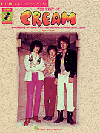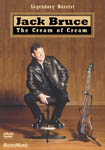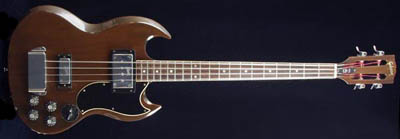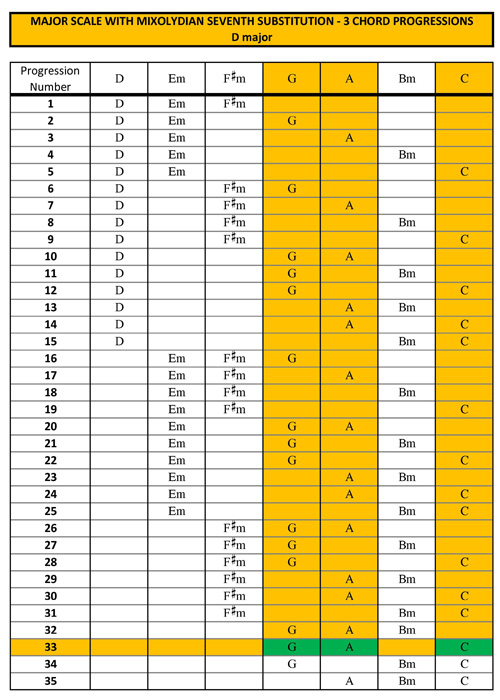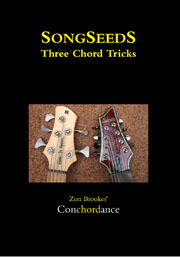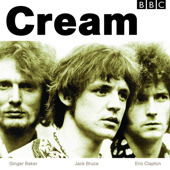Jack Bruce
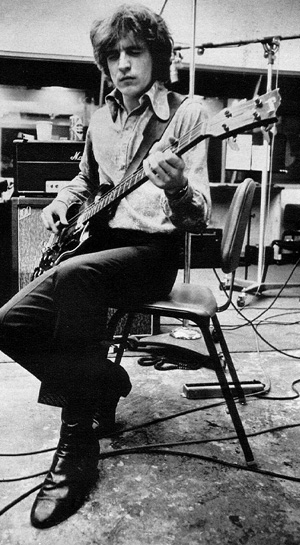 |
Jack Bruce was the songwriting talent and low end grunt behind supergroup Cream. |
|
Two BLOGoZONs in one this week - the first a very detailed look at the construction of Sunshine of Your Love by Cream and the second half examines three notes per string BLUES SCALE box shapes.
Sunshine of your love
This BLOGoZON is a reverse engineeering look at that great blues based song Sunshine of Your Love by Cream.
As a blues-based supergroup the obvious thing to start any Cream song with is the standard twelve bar blues chord progression and this is detailed for the key of D major in the diagram that follows:-
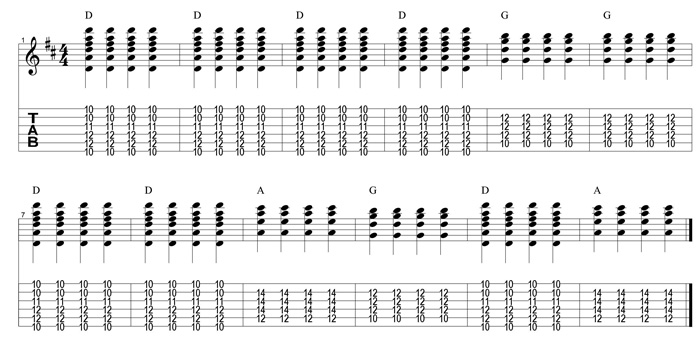
For an experimental band like Cream this sequence is too bland by half and therefore requires some re-jigging to make it worth listening to - this was achieved by employing the MIXOLYDIAN SEVENTH chord substitution technique.
The table that follows shows all of the scale chords for the CYCLE OF FIFTHS - i.e. major scales that accumulate sharp notes one at a time.
In the table below the in-key DIMINISHED chord has been replaced with the chord produced when the mixolydian mode (with the same root note) is harmonised - for example G mixolydian's seventh chord is F major and this replaces the F#dim.
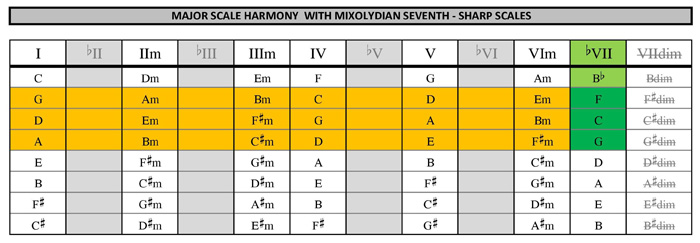
This mixolydian derived major chord SUBSTITUTES for the chord played on beat 3 of each and every bar (measure). The alternative way to view this is that two twelve bar blues sequences (in the keys of D major and C major) have been merged into one homogenius mass.
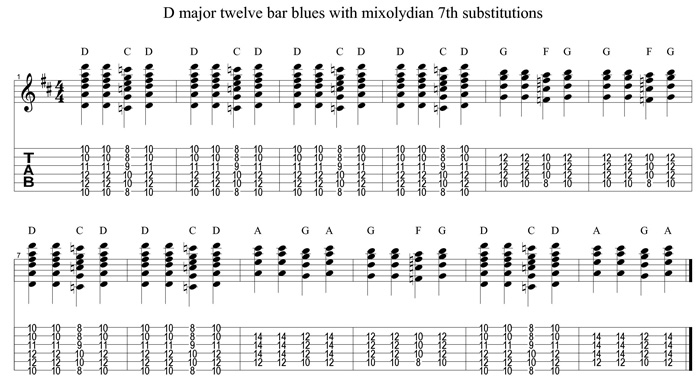
This sequence sounds good but it still feels too much like a standard twelve bar so more reworking is needed. How about we double-up the length of time spent on each chord and only use the mixolydian substitution in the first bar/measure - leaving the expected chord to ring for a whole-note duration in the extra bar/measure. Additionally the chords in the first measure should be played for staccato eighth-notes and accented. The result is a 24 bar/measure blues sequence shown below:-
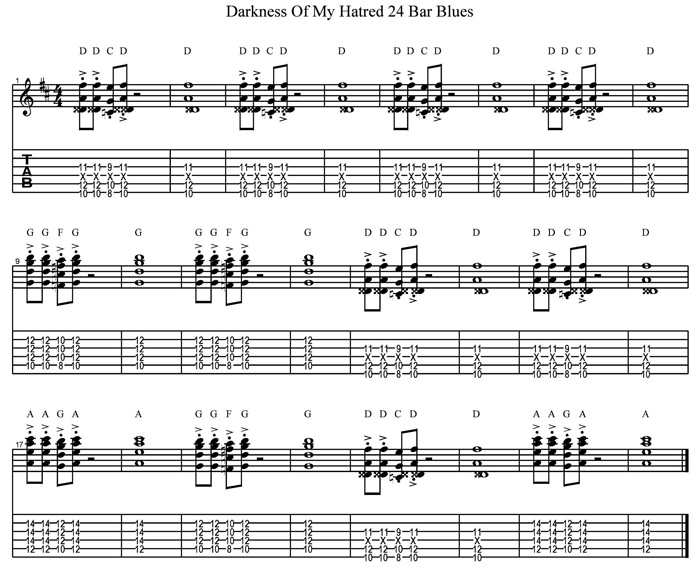
Still this sounds too bluesy and requires an injection of psychodelia with the aid of a three chord progression. These six bars/measures will take the place of the first three-quarters of the 24 bar blues' turnaround.

|
This repeated three chord progression is derived from the harmonised D major scale (again using a mixolydian seventh chord substitution in the form of a C major - which replaces an in-key C#dim). The table that follows details all of the three chord progressions for D major with a mixolydian seventh substitution. |
|
Buy SONGSEEDS- |
The previous table shows Progression No.33 in numerical order but the actual sequence used is variation number four - as highlighted in the next table.
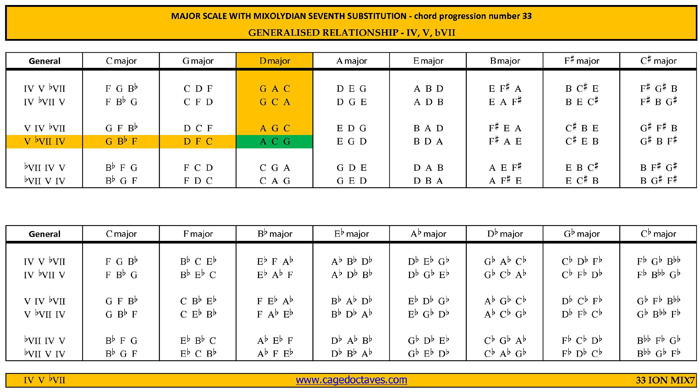
The relevent section of the previous table is enlarged below:-
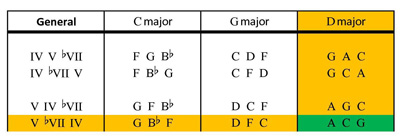
Replacing three-quarters of the turnaround with three repeats of Progression No.33 (variation four) results in the tab below - all that is needed now is a cool guitar/bass riff based around the blues scale.
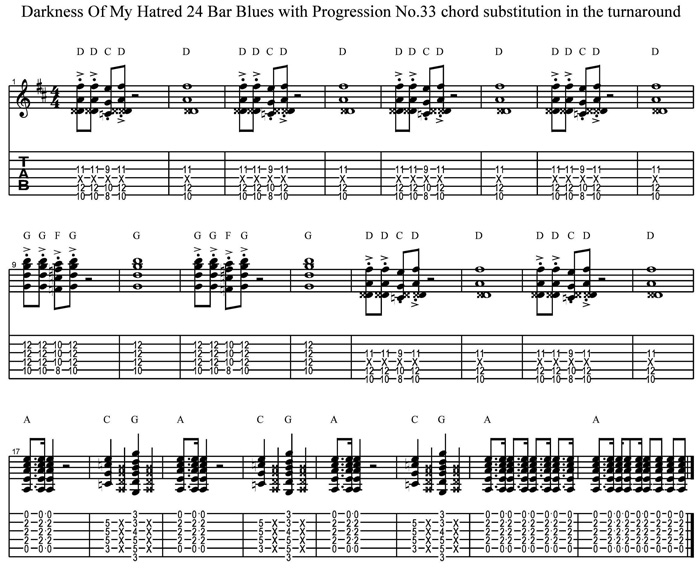
Standard 6E4E1 and 5A3 barre chord shapes can be used to play the blues sequences above - these are shown in the diagrams that follow:-
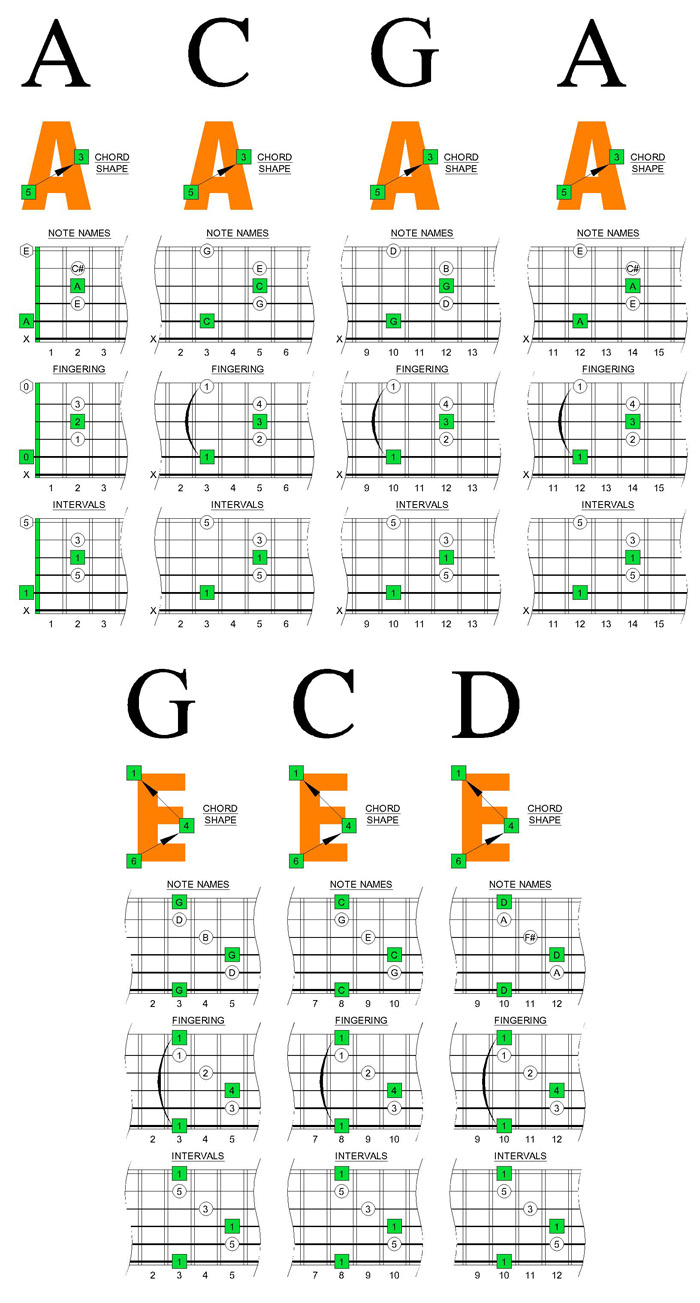
However the actual shapes used by Eric Clapton are detailed below - these fingerings are still only variations of the 6E4E1 and 5A3 barre chord shapes that can be moved around the neck more easily for chord riffs.

If only the root notes of the chords are considered the notes used for the riff come from the D blues scale where the intervals being played are 1 ,1, b7, 1, 5, b5, 4, 1, b3, 1. Vibrato is used on the minor third to emphasise the major/minor ambiguity.
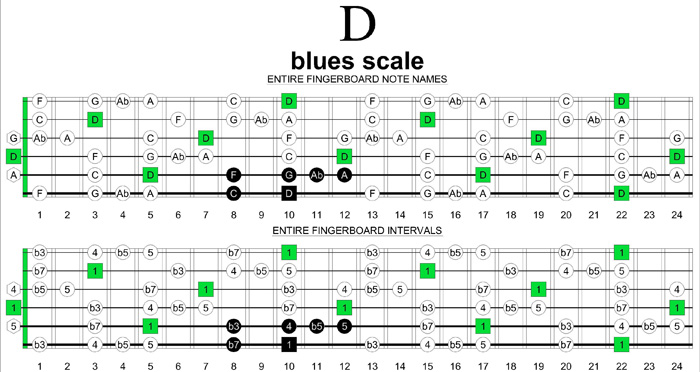
The interval sequence 1 ,1, b7, 1, 5, b5, 4, 1, b3, 1 is repeated over the G chord but this time drawing from the G blues scale as shown below.
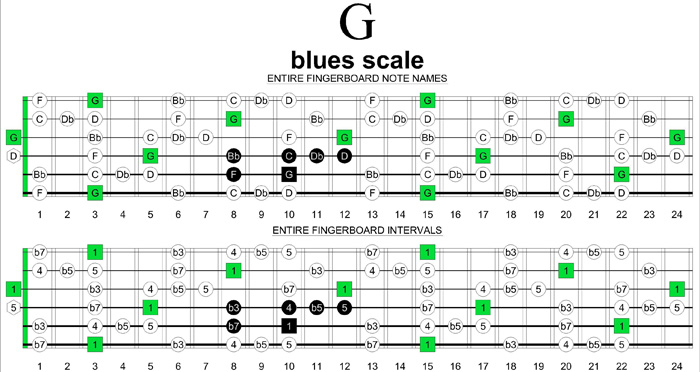
A blues scale 3 notes per string box shapes
|
||||||
- 5th
- b7th
- 1st
- b3rd
- 4th
- b5th
- 5th at 12
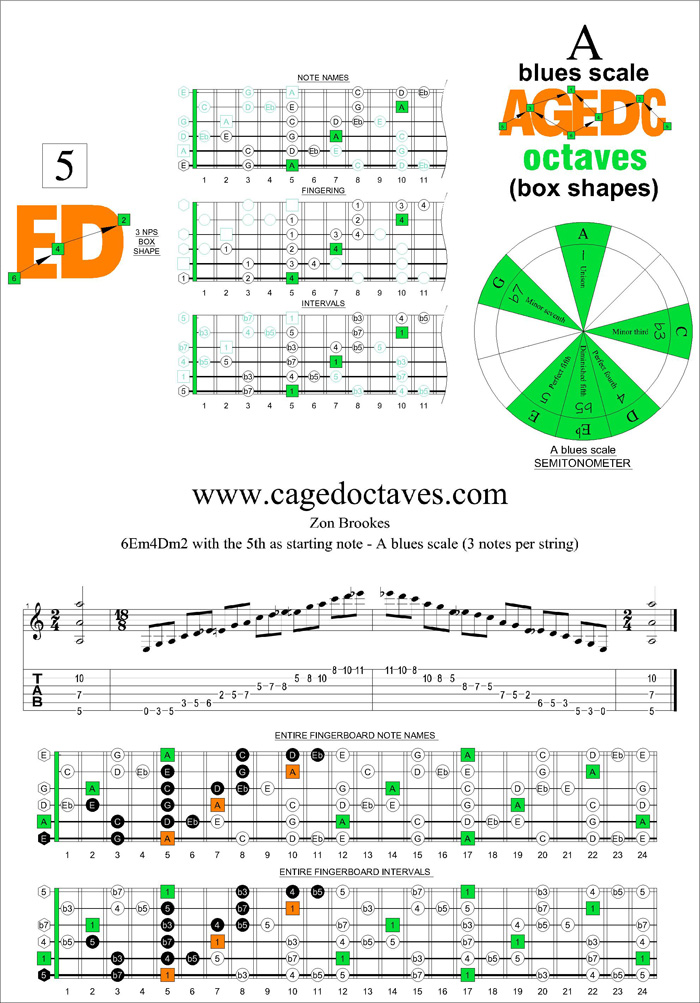
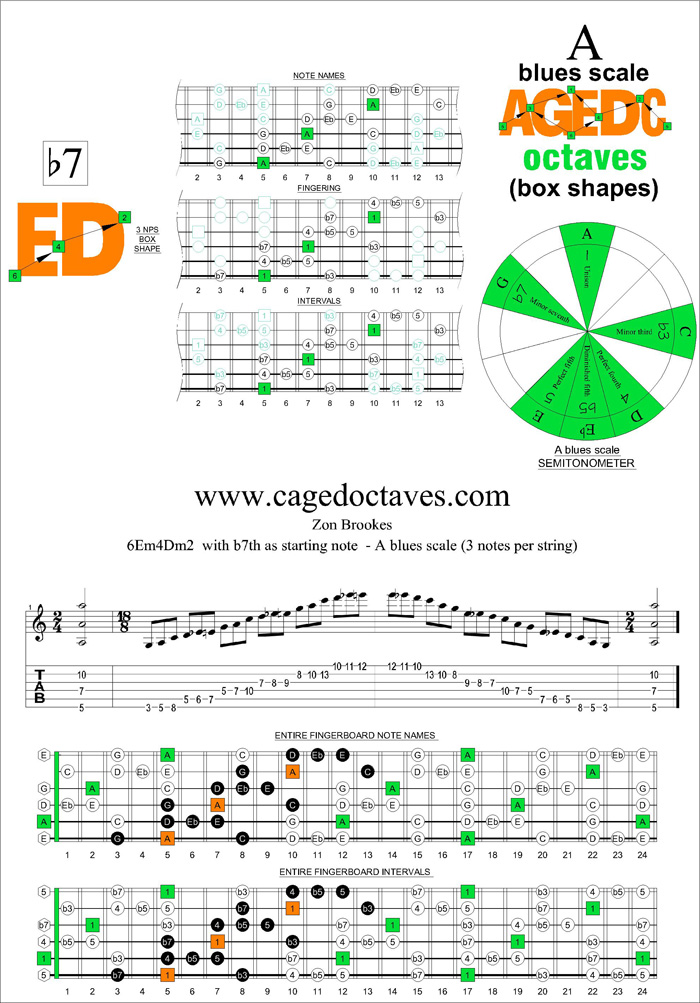
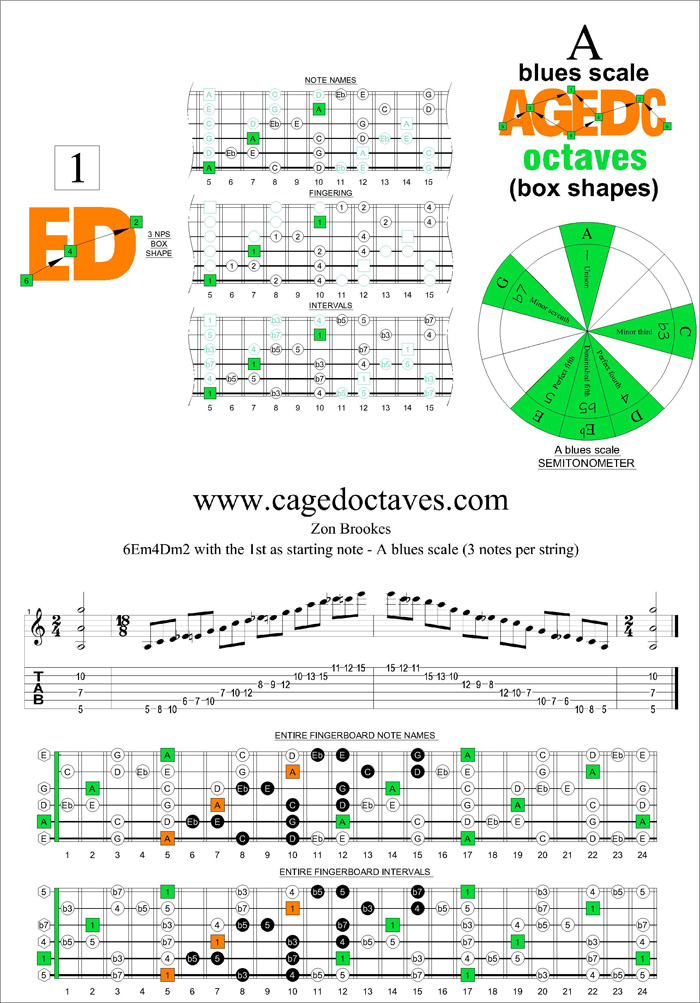
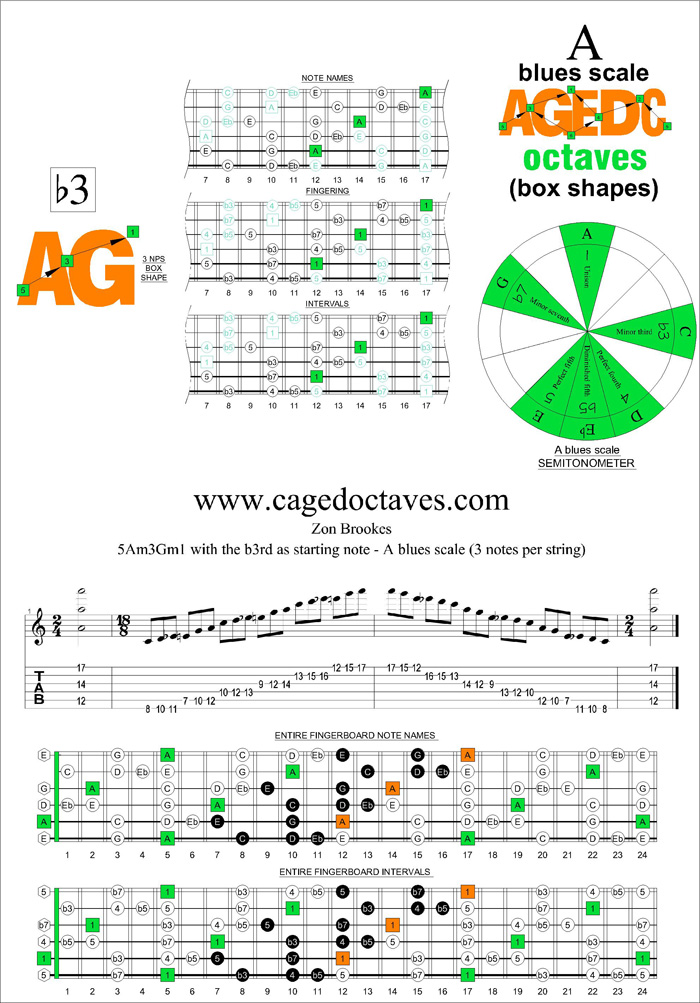
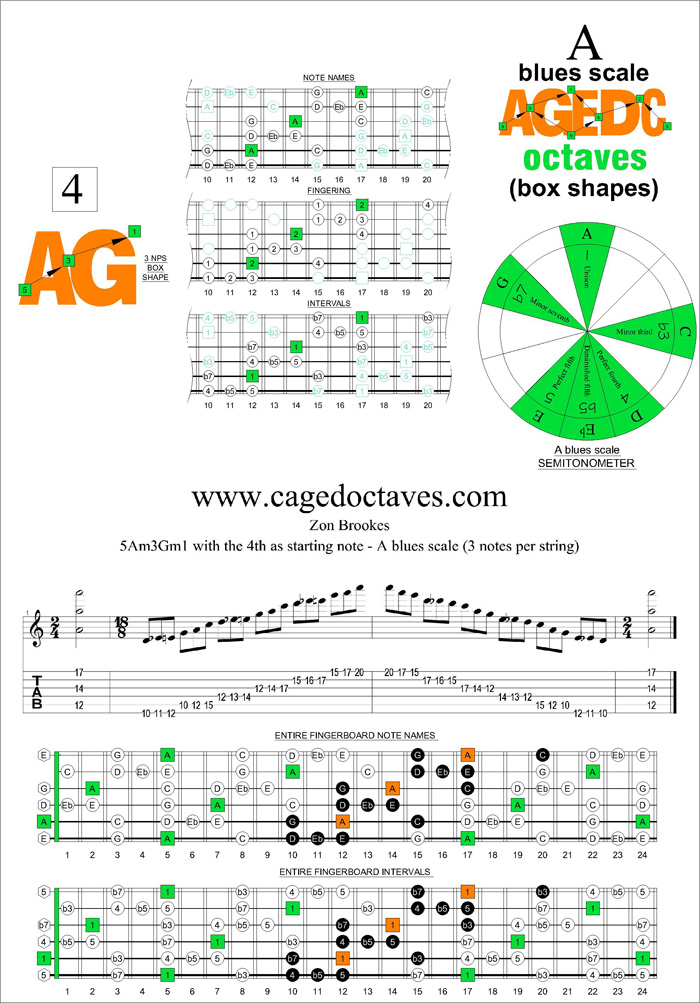
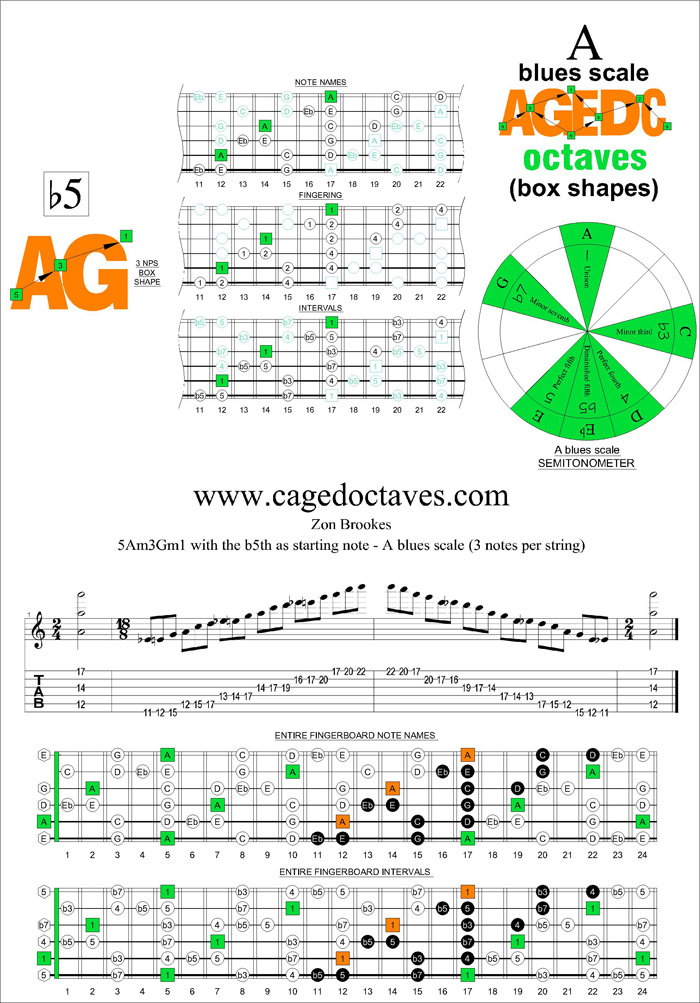
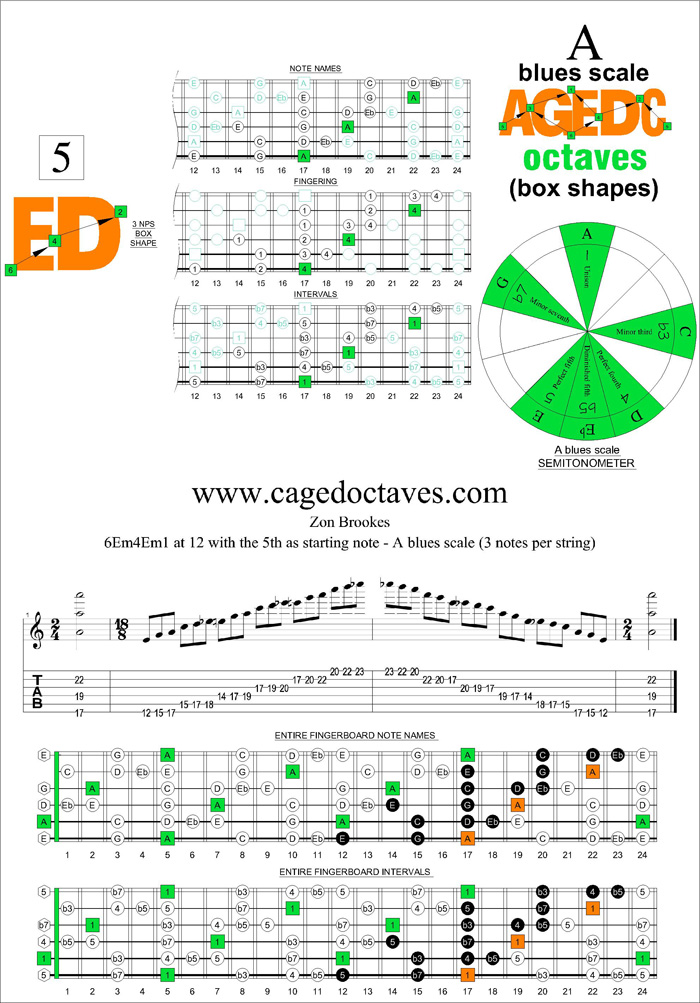
|
I'll stay with you 'till my seeds are dried up |


